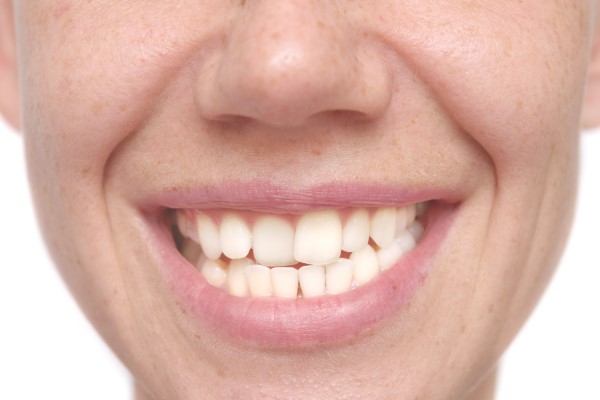Dental Fillings: Restoring Teeth Affected by Cavities and Decay

Dental fillings protect oral health by repairing teeth compromised by cavities and decay, preventing further damage, and helping patients maintain comfortable, confident smiles. This essential treatment seals vulnerable areas, supports tooth structure, and stops bacteria from spreading deeper into tooth layers. By addressing cavities early and restoring compromised enamel, dental fillings preserve the longevity of natural teeth and reduce the chance of complex procedures.
How cavities form and progress
Cavities follow a predictable path. Plaque settles on the teeth, creating a sticky coating that traps bacteria. These bacteria break down sugars and release acids that begin to erode the enamel surface. Enamel has a hard structure but cannot withstand acid attacks indefinitely. When acids penetrate the enamel, they reach the softer dentin beneath, making the tooth highly susceptible to damage.
Sensitive, throbbing, or lingering pain often signals deeper decay. Neglecting these warning signs increases the likelihood of infection within the tooth's pulp. The pulp houses blood vessels and nerves that keep the tooth alive, so infection within the tooth's pulp. The pulp houses blood vessels and nerves that keep the tooth alive, so infection within this area frequently leads to severe discomfort or abscess formation. Detecting cavities early and addressing them with the appropriate restoration, preferably dental fillings, can help patients reduce the possibility of extensive treatments such as root canals or extractions.
The purpose of dental fillings
Dental fillings repair compromised tooth structure by sealing the area left after removing the decayed material. They restore a tooth's shape and function, enabling normal chewing and speaking. Additionally, a properly placed filling blocks bacterial infiltration, which helps preserve the overall well-being of the tooth and the risk of further damage.
Placing the fillings is relatively simple and can usually be performed in one appointment, depending on the material. Dentists use specialized instruments to remove decayed tissue and carefully clean the cavity. Once the space is debris-free, they place the chosen filling material and contour to fit the tooth's natural shape. This approach supports the tooth's structural integrity and prevents fractures or cracks.
Common dental filling material
As mentioned, the dentist will need to choose a dental filling material that appropriately suits the patient's condition. The most common materials are as follows:
Amalgam
Amalgam comprises a combination of metals, including silver, tin, copper, and mercury. It withstands significant chewing forces and frequently appears in back teeth. Although amalgam restorations provide excellent strength, they do not match tooth color, so dentists often recommend them for less visible areas.
Ceramic
Ceramic fillings, often crafted from porcelain, offer notable stain resistance and a pleasing appearance. They are usually created in a dental lab and then require the dentist to bond them to the tooth, resulting in a natural-looking surface. Ceramic may be slightly more brittle than other options, so the dentist's recommendation often hinges on the tooth's location and the patient's bite forces.
Composite resin
Composite resin blends well with natural teeth, making it popular for visible areas. It bonds directly with tooth enamel, reinforcing the tooth and minimizing the removal of healthy tissue. A curing light hardens the composite in layers, creating a secure restoration that blends with surrounding teeth.
Glass ionomer
Glass ionomer fillings release fluoride, offering additional decay protection over time. This material is sometimes chosen for younger patients or areas near the gum line. Although glass ionomer may lack the strength of amalgam or composite, its fluoride-releasing capability supports long-term oral health.
Benefits of choosing dental fillings
Dental fillings allow patients to maintain a healthy, functional smile by reinforcing damaged teeth. They help prevent bacteria from reentering vulnerable areas, reducing the likelihood of repeated decay. This protective seal extends the tooth's lifespan, lessening the need for more extensive procedures.
Fillings also restore comfort during eating and drinking by covering exposed surfaces and rebuilding the tooth's normal form. This coverage addresses sensitivity resulting from weakened enamel or open cavities. By retaining the majority of natural tooth structure, fillings support normal chewing and speaking abilities, helping individuals feel more confident in performing their daily oral functions.
Restore your teeth with dental fillings
Dental fillings remain a trusted and versatile solution for teeth affected by cavities and decay. Timely detection and intervention of cavities preserve natural tooth structure and minimize the possibility of invasive procedures. If you believe you have a cavity, do not wait to seek care. McCarthy Dentistry offers various restorative options, including dental fillings, to restore your smile to its former glory.
Request an appointment here: https://www.mytotaldentistry.com or call McCarthy Dentistry at (740) 546-5178 for an appointment in our Marietta office.
Check out what others are saying about our dental services on Yelp: Composite Fillings in Marietta, OH.
Recent Posts
A dental filling is important in achieving good dental health and a painless smile. This dental restoration can seal the tooth and protect it from further decay. Knowing when to get fillings can help you achieve your smile goals earlier. Here are the signs your tooth may need a dental filling right away.Pain often develops…
When individuals experience cavities and other problems that affect their teeth, dentists use a dental filling to repair and restore them. This helps preserve damaged teeth and prevents their loss. Dental fillings are the most common type of dental work: according to the Centers for Disease Control and Prevention, over 90% of Americans have had…
A cavity indicates that your tooth is decayed to some extent and requires a dental filling. This tooth decay will spread even further if it is not addressed by a dental professional. Cavities are treated by filling them with one of the dental materials designed to treat cavities, which prevents further tooth deterioration. Maintaining the…
A dental filling is subject to wear and tear. Read on to learn about a few signs of a cracked dental filling to watch for. The damaged filling can remain a minor inconvenience, just so long as you see a dentist as soon as you discover the problem.Fillings have reasonably long lifespans, with some filling…


